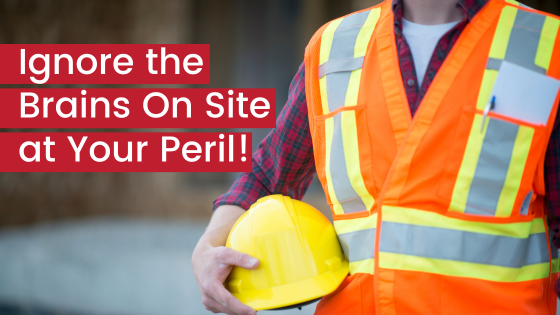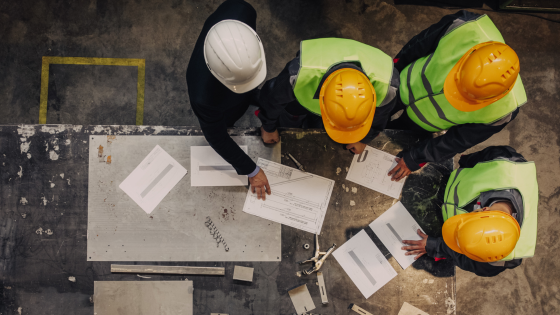
Neuroscience is an ever growing field of research and discovery, with its findings highly relevant across all aspects of life. When we look at safety leadership and culture, considering performance with our brain in mind helps us understand how to get the best out of ourselves and others, and how the role of neuroplasticity allows us to constantly improve and evolve with the scientific proof behind it.
The key driving principle of the human brain is centred around threats and rewards. Our brains are constantly scanning the environment – both the physical environment (the workplace,) and the social environment (the way people behave towards us) – for anything it might perceive as a threat or a reward. When leaders understand the impact of their behaviour on the brains of those they lead, they can learn to behave in ways that trigger the desired behaviour in people.
“There is a mismatch between what science knows and what business does.” Dan Pink
Two Assumptions About ‘Brain-Friendly’ Worksites that Simply Aren’t True
There are two incorrect assumptions I often hear about creating brain-friendly workplaces that often create unnecessary resistance and barriers to increasing safety-minded leadership on site.

The first is that running a brain-friendly worksite is too ‘soft’. The other is that running a brain-friendly worksite is too ‘hard’. Let me explain!
Those in the ‘too soft’ camp are the ones led by the assumption that if we start introducing brain friendly strategies in the workplace nothing will get done. We’ll be spending our time on people issues and not on critical production issues. We’ll be diverting our attention to hand holding as opposed to driving quality performance. We’ll be wasting time we don’t have on having to create a warm and fuzzy environment when people should just get on with their jobs.
YET it is being proven time and again that if you do go down the brain-friendly path, you’ll increase engagement, performance, quality and loyalty. 81% of employees say they’d work harder if bosses were more grateful for their work. (Elton and Gostick, Leading with Gratitude) while research shows, high trust is an economic driver of growth. Organisations with high trust outperform low trust ones by more than 280% (on total return to shareholders,) and high trust also offers a multiplier of 3x performance. (Stephen Covey, Speed of Trust)
The second assumption is that it is too hard to create a brain-friendly workplace. Change is hard, which is why it’s important to commit to a consistent and collective approach with ongoing learning, peer mentoring, tangible actions and space to share stuff ups. James Clear talks about habits like a compound interest of self improvement. If we focus on our trajectory and not our position, all we need is time to make those small improvements that will continue to transform performance and culture.

Here are my Two Top Tips for Making Your Work Place ‘Brain-Friendly’
Even though we’re talking about neuroscience, the good news is that it’s not rocket science to increase the brain-friendliness of your workplace!
First of all, we want to be increasing psychological safety – where everyone feels comfortable to speak up. This will lead to increased trust, engagement, wellbeing and collaboration.
A good place to start is to create more conversation with those on the front line, and add layers of depth to those conversations. Really probe how they are, recognise their reality, and acknowledge their input. Declare your intent and make it a two way process.
It’s time well worth spending when it’s reported that leaders influence psychological safety by as much as 70%, and that 75% of employees report that the most stressful part of their job is their immediate supervisor. (Workhuman 2021)
The late great Shane Warne said he made a conscious decision to make ‘every ball an event.’ I love the idea of translating that intention to your work site and to every interaction you invest in.
Secondly, fostering psychological ownership increases motivation, stewardship and loyalty, not to mention the plethora of knowledge and skills across your teams that often remain untapped, simply because it’s not accessed.
Despite our best intentions, we can easily shut down team members and miss out on their input and ideas. As a leader, demonstrate that you need all the ‘brains that you can borrow.’
Psychological safety and ownership appeal to our brains – they trigger the domains of Significance, Certainty. Autonomy, Relatedness and Equity in a positive way, thereby reducing social pain and the likelihood that we could be inadvertently triggering resistance and impediments to high safety performance.
“Everything you do in life is based on your brain’s determination to minimise danger and maximise reward.” Evian Gordon
If you would like to see real-world examples showing the impact of improving site safety culture, contact me on 0420 204 982 or email deborah@deborahkeep.com for a copy of my own case studies with current clients.
